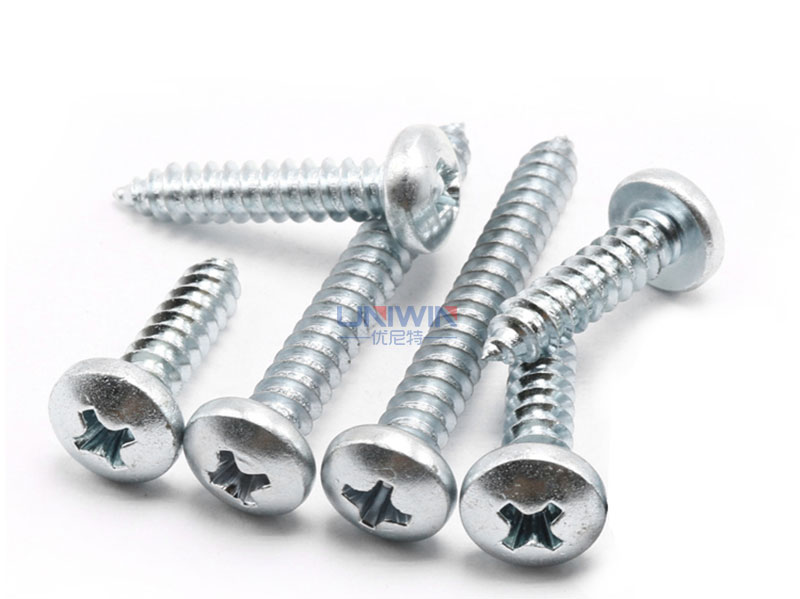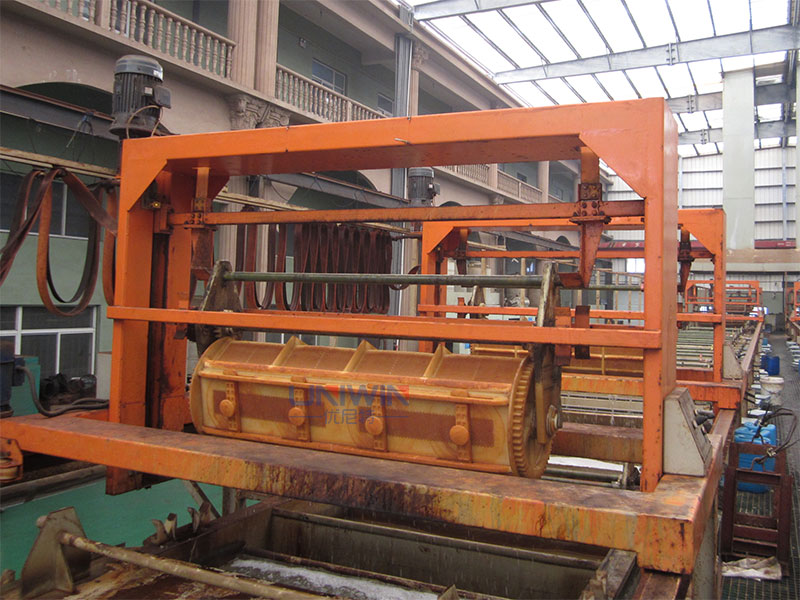What is the nail galvanizing process?
The nail galvanizing process refers to the process of coating a zinc layer on the surface of the nails by the nail galvanizing equipment for aesthetics and slowing down the process of rusting and corrosion, such as roofing nails, concrete nails, screw nails and wire nails. The common methods used are hot-dip galvanizing and electro-galvanizing.

Hot-dip galvanizing vs. electro-galvanizing
Both electro-galvanizing and hot-dip galvanizing are methods of protecting nails from rust and corrosion by coating them with a zinc layer. Electro-galvanizing is a more controlled and precise method, producing a thinner, smoother coating. At the same time, hot-dip galvanizing provides a thicker, more durable layer with a slightly rougher texture. The choice between the two methods depends on the specific requirements of the application and the desired coating properties.
What are galvanized nails?
Galvanized nails refer to coating a zinc layer on the surface to increase the anti-rust and anti-corrosion capabilities of the nails. Galvanized nails generally use the electroplating process, and the zinc coating allows them to withstand moisture better, greatly increasing their corrosion resistance and service life. Therefore, galvanized nails are commonly used in outdoor applications such as deck building, roofing, structural framing, and exterior finishes.
How to galvanize nails?
There are mainly eight steps to galvanizing nails, such as roofing nails, concrete nails, screw nails and wire nails, including polishing, rinsing, galvanization, rinsing, blue-white passivation, rinsing, rinsing with hot water and drying. And details are as follows:
- Polishing. Nails are first polished to remove contaminants such as dirt, oil, and grease in the nail polishing equipment. Place hydrochloric acid, degreaser, water and nails into the polishing barrel. And the amount of nails put in should be controlled at two-thirds of the bucket capacity.
- Rinsing. Next, nails are thoroughly rinsed with clean water to ensure all residue from the polishing solution is removed.
- Galvanization. Nails are then galvanized to ensure corrosion resistance and anti-rust effects by the galvanization equipment, which adopts electro-galvanizing technology. Electro-galvanizing uses electrolysis equipment to deposit a zinc layer on nails through the directional movement of the current from the positive to the negative pole. After degreasing and pickling, nails are put into a zinc salt electrolyte solution and connected to the negative pole of the electrolysis equipment. Then a zinc plate is placed on the opposite side of the nail and attached to the positive pole of the electrolysis equipment to switch on the power supply.

- Rinsing. This step is to remove the chemical agents left after galvanizing.
- Blue-white passivation. Passivation refers to the oxidation treatment of metals by strong oxidants or electrochemical methods to make the surface inactive. It is a method to transform the metal surface into a state that is not easily oxidized and delays the corrosion rate of the metal. Nails are oxidized with nitric acid, a strong oxidant, to make the surface inactive and slow down the corrosion rate of the nails. And the passivator can improve the corrosion resistance of nails and increase the color of nails.
- Rinsing. This step of water washing removes the nitric acid and passivator residual remaining on the nail surface.
- Rinsing with hot water. After passivation, nails can be scalded with hot water at a moderate temperature, which not only can clean the residual liquid on the nail but also can seal the film layer to protect the corrosion resistance of nails. Although passivation requires hot water for cleaning, the water temperature should not exceed 60 degrees Celsius. This is mainly because the passivating film has just formed and will not be very stable. If the cleaning water with too high temperature is used, the newly formed passivating film will be easily broken, making the passivated workpiece film thinner, lighter in color, and poor in corrosion resistance. However, if the temperature is too low, the workpiece will not be cleaned.
- Drying. The function of drying is not only to dry the surface of the plated parts but also to make the hydrogen ions in the coating diffuse out during the heat preservation process to prevent hydrogen embrittlement damage of the plated parts.
The Chemical Agents used in Nail Galvanizing:
| No. | Stage | Chemical Agents |
|---|---|---|
| 1 | Polishing | Hydrochloric acid-10 kg Degreaser-100 g Water-100 kg Nails-2/3 of the barrel capacity |
| 2 | Galvanization | Potassium chloride Boric acid Zinc chloride Galvanized softener Zinc-plating brightener Tap water |
| 3 | Passivation | Water-150 kg Passivator-2 kg Nitric acid-50 ml |
If you want to know the recipe for the specific nail galvanizing process, please contact us by following the contact information on the right side of the article.
